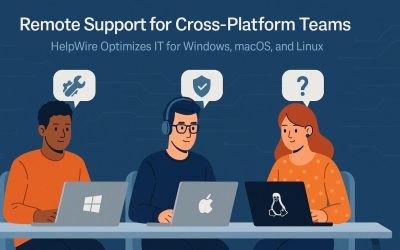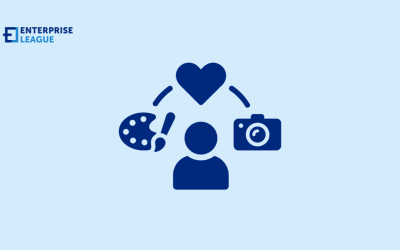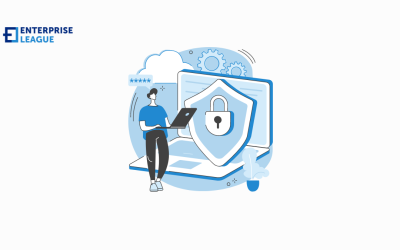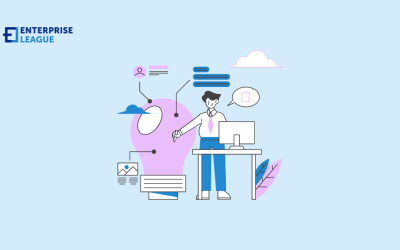In the current business environment, IT teams are tasked with supporting increasingly complex and diverse workforces. With many companies transitioning to remote and hybrid work models, the need for reliable, cross-platform support has never been more apparent....

33 Inspirational Business Partnership Quotes to Fuel Collaboration and Growth (2025)
33 Inspirational Business Partnership Quotes to Fuel Collaboration and Growth (2025)
November 13, 2024

Millions of successful companies have built strategic business partnerships to increase the value of their services and products whilst reducing their costs. Business partnership quotes offer timeless reminders that success is rarely a solo pursuit. Whether you’re launching a startup or scaling a company, the right partnerships can multiply your growth and deepen your impact. These quotes celebrate the trust, collaboration, and vision that great partnerships are built on.
Quick Take Most Memorable Business Partnership Quotes
- “Success is best when it’s shared.” – Howard Schultz
- “A partnership based on trust is a force that no competitor can undermine.” – Unknown
- “Just one great partnership can transform your entire business.” – Janine Ogg & Jo Foster
- “Great things in business are never done by one person.” – Steve Jobs
- “The foundation of every successful partnership is shared values.” – Unknown
Why Business Partnerships Still Matter in 2025
Strategic partnerships aren’t just cost-sharing arrangements. They’re growth engines. From Fortune 500 giants to scrappy startups, collaboration is key to innovation and long-term success.
As Dr. Jeffrey Dyer, professor of strategy at BYU and co-author of The Alliance Advantage, notes, “The most successful partnerships are built on trust, clear communication, and shared goals.”
Top Quotes on Business Partnership and Collaboration
We have compiled a selection of insightful quotes from accomplished entrepreneurs and influential leaders around the globe. These quotes provide valuable perspectives on the benefits of business partnerships and how these can lead to increased success and growth.
- “Business is not about one’s own success or failure, but how successful we make our partners.” – Donald Trump, 45th US president
- “Partnership is not a legal contract between two equal individuals. It’s an emotional alliance between two people who are committed to each other’s success.” – Warren Buffet, businessman, investor, and philanthropist
- “Success is best when it’s shared.” – Howard Schultz, businessman, author, and former CEO of Starbucks
- “A friendship founded on a business is better than a business is founded on friendship.” – John D. Rockefeller, businessman, investor, and philanthropist
- “All lasting business is built on friendship.” – Alfred A. Montaper, engineer, philosopher, and author
Harvard Business Review highlights that high-performing partnerships often rely on clearly defined expectations and mutual value creation.
6. “It’s rare to find a business partner who’s selfless. If you’re lucky it happens once in a lifetime.” – Michael Eisner, former CEO of The Walt Disney Company
7. “The best partnerships aren’t dependent on a more common goal but on a shared path of equality, desire, and no small amount of passion.” – Sarah MacLean, New York Times bestselling author
8. “If your business partners aren’t working as hard as you, it’s not a partnership it’s a sinking ship.” – Julian Hall, entrepreneur
9. “While it’s important to be aware of and sensitive to cultural differences when conducting business internationally, the principles of transparency, trust, and partnership are universal.” – Dan Quayle, 44th vice president of the US
10. “I had a female business partner once. Didn’t work.” – Mel Gibson, actor and film director
You May Also Like:
- Leadership Quotes That Inspire Better Decision-Making
- How to Build a Business with Purpose (Not Just Profit)
- Best Business Advice from Successful Entrepreneurs
11. “Great things in business are never done by one person; they’re done by a team of people.” – Steve Jobs, entrepreneur, business magnate, and investor, media proprietor
12. “If everyone is moving forward together, then success takes care of itself.” – Henry Ford, founder of the Ford Motor Company
13. “Individually we’re one drop, but together we’re an ocean.” – Ryonosoke Satoro, entrepreneur
14. “Collaboration is the essence of life. The wind, bees, and flowers work together, to spread the pollen.” – Amit Ray, Indian author and “spiritual master”
15. “I know that the podcast is typically something I can do forever because it’s mine; it’s just me and my producer and business partner, so it’s our business.” – Marc Maron, American stand-up comedian
16. “I don’t think most people want me to have a business relationship as a senator where my business partners can reap the benefit of my position and I one day get the share the profits.” -Lindsey Graham, American lawyer and politician serving
17. “I’m no longer an artist, I’m a business partner.” – Pitbull, musician/rapper
18. “For many, my behavior has been a major disappointment, my behavior has caused considerable worry to my business partners, and everyone involved in my business, but most importantly to the younger people we influence, I apologize.” – Tiger Woods, professional golfer
19. “I’m very open with my business partners, just like I’m with my husband.” – Dolly Parton, singer/songwriter, actress
20. “”Contract law is essentially a defensive scorched-earth battleground where the constant question is, If my business partner was possessed by a brain-eating monster from beyond spacetime tomorrow, what’s the worst thing they could do to me?” “ – Charles Stross, writer
Want to Find the Right Business Partner?
Enterprise League connects you with companies ready to collaborate, co-build, and grow together. Whether you’re looking for a manufacturing partner, service provider, or new supplier, we make B2B connections smarter and faster. Create your free profile and explore trusted businesses now.
21. “Whenever you see a successful business, someone once made a courageous decision.” – Peter Drucker, management consultant, educator, and author
22. “Success on any level begins when you accept responsibility for creating life what you want. You’re the only person who can truly make it happen. Not your boss, your business partner, your financial planner, or your spouse of life-partner. Just you.” – Paul Clitheroe, television and radio presenter
23. “The man who’ll use his skill and constructive imagination to see how much he can give for a dollar, instead of how little he can give for a dollar, is bound to succeed.” – Henry Ford founder of the Ford Motor Company
24. “To me, a spouse should be a life partner and a business partner. Just like any good partner, her strengths must make up for my weaknesses and vice versa.” – Robert Kiyosaki, entrepreneur, and author
25. “It’s literally true that you can succeed best and quickest by helping others to succeed.” – Napoleon Hill, entrepreneur, and author
26. “The success combination in business is: do what you do better.., and: do more of what you do …” – David Joseph Schwartz, motivational speaker, and coach
27. “Just one great partnership with the right person can have an incredible impact on your business success.” – Janine Ogg and Jo Foster, entrepreneurs
28. “Whenever an individual or a business decides that success has been attained, progress stops.” – Thomas J. Watson, CEO of IBM
29. “The foundation of every successful partnership is not just shared vision but shared values.” – Unknown
30. “Never burn bridges. Today’s junior jerk, tomorrow’s senior partner.” – Sigourney Weaver
31. “The best partnerships aren’t dependent on a mere common goal but on a shared path of equality, desire, and no small amount of passion. ” – Sarah MacLean
32. “A partnership based on trust is a force that no competitor can undermine.” – Unknown
33. “The foundation of every successful partnership is not just shared vision but shared values.” – Unknown
Final Thoughts on Building Strong Business Partnerships
From all these business partnership quotes we can clearly highlight the importance of teamwork and collaboration.
By keeping these words of wisdom in mind, we hope that you can stay motivated and continue to reap the benefits of business partnerships. It’s important to bear in mind that cultivating strong relationships through business partnerships requires dedication, perseverance, and hard work.
More must-read stories from Enterprise League:
- How to Build a Business with Purpose (Not Just Profit)
- How to Start a Wholesale Business from Scratch
- Smart Collaboration Tips for Small Business Teams
Related Articles
Remote Support for Cross-Platform Teams: How HelpWire Optimizes IT for Windows, macOS, and Linux
What Are the Best Drying Agents for Car Washes to Speed up Service? 10 Options
In car wash operations, every second counts. A top-performing drying agent reduces water spots, speeds service, increases throughput and enhances customer satisfaction. The right formula can turn average results into showroom shine while helping your business operate...
The Role of a CMMS to Minimize Recalls in the Automotive Industry
In recent years, several recalls have occurred in the automotive industry. This has resulted in unplanned expenses, negatively impacting the company's overall revenue and reputation. Such incidents have necessitated the investment in a Computerized Maintenance...
6 B2B Lead Finder Tools That Help You Book More Meetings
Sometimes, all it takes is one meeting to get your big break. To get there, you have to send out dozens of emails, follow up politely, and even try to personalize your approach for maximum engagement. But, if you aren't talking to the right people, it doesn't matter...
Realmo brings commercial real estate analytics to Main Street, expanding its AI navigator to over 9 million U.S. properties
[Boston, MA: 25 Nov 2025] A next-generation commercial real estate decision-support platform Realmo announces today an expansion of its database to over 9 million commercial properties across the U.S. This milestone provides investors, sellers, and deal-makers with an...




















